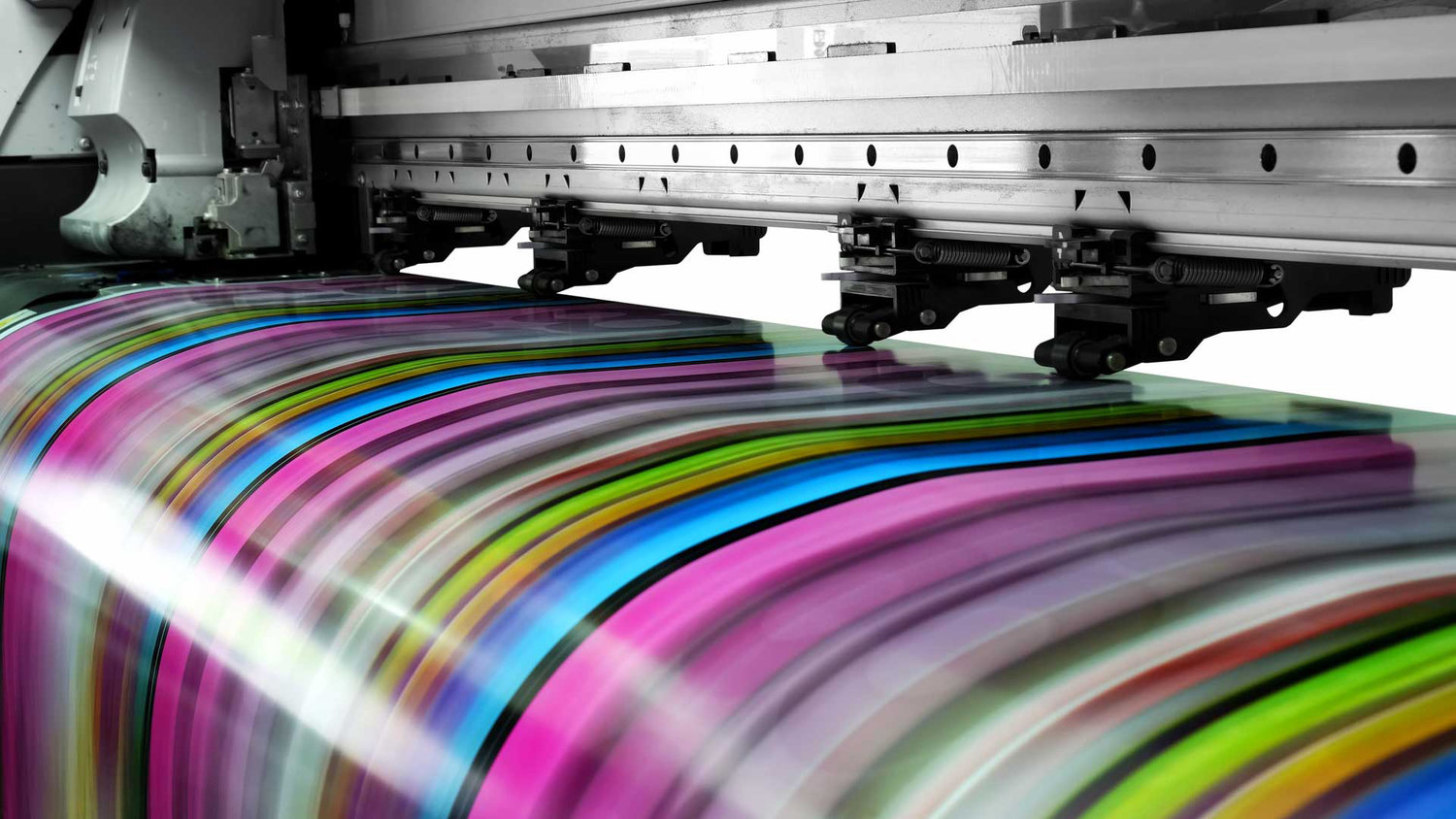Commercial printing is found on the sides of buses and buildings, corflutes, pop up tents, banners, flyers or business cards and is one of the best ways of letting companies know how you can add value to their business. Printed materials are produced in a variety of different ways, according to the purpose, location and proposed budget.
Let’s have a look at some of the different types of commercial printing and where they are best applied.
Table of Contents
Digital Printing
Digital printing is the process of printing directly from the image on a computer via laser or inkjet printer. This is most suitable for small runs up to about 1500 copies.

Laser printer
The laser printer uses a metal drum with both positively and negatively charged spaces. As the toner roller passes over the drum, the toner sticks to the negatively charged spaces then rolls over the paper, transferring the image to the paper. The results are precise and sharp, and speedily produced in high volume.
Inkjet printer
Inkjet technology impels very fine dots of ink onto the paper replicating the image on the computer. The dots have resolutions of up to 1440 x 720dpi, and the colours are minutely placed to represent the colours on the screen.
Offset Lithography
Offset printing transfers an inked image from a plate to a rubber blanket that impresses directly onto the printing surface for a very clean finish. Combined with lithography, oil based ink is rolled over a flat image carrier, transferring the ink to the image, while a water based film is rolled over the non- image areas. The image is then printed onto paper fed by a reel for high volume production. Plates are easy and quick to produce and are long-lasting. Offset printing is the currently most economical way of printing commercial grade materials.
LED UV printing
LED UV printing provides fast drying, eco- friendly printing on a variety of materials. Using specialized inks, high intensity LED UV lighting cures the ink onto the printing surface for a very quick, clean and toxic free finish. Without the need for heat, this printing is enabled on a wide range of materials including plastic, foam, foil, acrylic and paper. The finished product is very durable with high resistance to marks or scratches.
Flexography
Flexography uses flexible photopolymer plates that are inked and wrapped around a rotating cylinder on a web press. The plates are rotated at high speed to transfer the image to the printing substrate. Flexography is effective on almost any surface including uneven or raised such as corrugated materials, fabric and metallic film as well as absorbent and non-absorbent. It is commonly used for continuous pattern printing such as for gift wrap or wallpaper, packaging and label making.
When deciding the best printing type for your commercial requirements, your local experts will be able to suggest the most suitable application for the finished product. For high quality commercial printing, the Rothfield team will ensure you get the best results at the best price.

